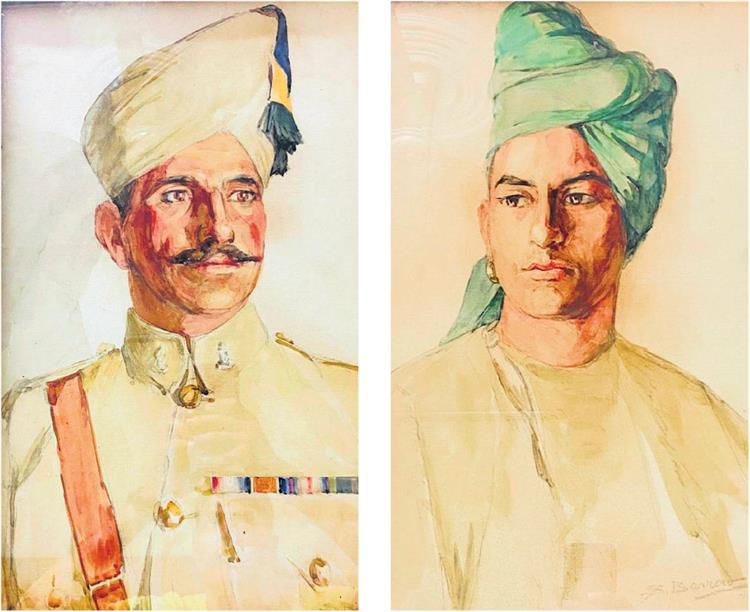British Gen’s artist wife and the muse
The air was getting warmer by the day and the hot weather was coming. Soon it would have full sway over the plains of India, from Peshawar to Calcutta. The offices of the Eastern Command headquarters at Lucknow started packing up for the annual move to the cool hills of Nainital for the summer. They would halt at Bareilly en route.
Sybilla Barrow’s husband was the army commander and Nainital held a special attraction for the family. He was born there in 1864. His father had also been a General in the British Indian army.
A carriage was driving the two to a bungalow in Bareilly when she asked him, “George, who are these boys in native costumes?”
“They are the fresh recruits who have arrived for their military training,” the General replied.
Sybilla Barrow was an artist with a sensitive eye. She wanted to paint one of those young men she had seen. She got her art box and laid out her painting materials in a room with lots of natural light.
“Would you mind calling a few of those young boys? I would like to make a portrait of one of them,” she told her husband. “Bilkul,” he replied. He spoke good Hindustani.
He sent a message across to the centre commandant, who conveyed it to the Subedar Major of the Jat Regimental Centre. Soon, a couple of recruits in dhoti and kurti reached the bungalow.
She sketched for some time and then threw down her pencil, before dismissing the recruits, “Some boys came and I tried to sketch them. They won’t do,” she told her husband.
The next day, the Subedar Major sent some more recruits to sit for her. One or two were selected, but were sent back again.
A puzzled centre commandant called the Subedar Major. “She wants to draw an ideal young Jat, why can’t you select them?”
“Sahib, I have sent a fair sample of young men from all over. I have sent boys from Bikaner, Rohtak, Hisar, Meerut. I don’t know what the Memsahib is looking for?”
Colonel Warden, the centre commandant, told Subedar Major Mauji Ram to go the bungalow himself and find out. Like her husband, Mrs Barrow spoke Hindustani and had a deep affection for India and its people.
“Memsahib, what kind of recruits are you looking for? I have sent you the finest recruits,” he told her.
Sybilla Barrow took a long look at him, her artistic insincts fully deployed. The Subedar Major was a fine looking man, 6 feet 3 inches tall, with a clean-cut sculpted face. He stood there, a picture of soldierly dignity that long years of service had imparted to him.
“Would you mind if I ask you to go and sit on the chair?” she told him and started sketching the Subedar Major soon enough.
“But Memsahib, I am an old man,” he protested.
“Never mind, I think you will do perfectly,” she shot back.
Many sittings later, the two paintings were complete. Mrs Barrow imagined how he would have looked as a young recruit and drew him out of the sheer power of her imagination.
Both the paintings of Subedar Major Honorary Captain Mauji Ram, Order of British India (OBI), are displayed at the Jat Regimental Centre, Bareilly. The portrait of the young Mauji Ram acquired a symbolic aura; today, it is embossed as the regimental escutcheon and is an iconic symbol of the Jat soldier.
Belonging to Dhandlan village in Jhajjar district of Haryana, he died in 1960. His son, Major Ran Singh Ahlawat, joined his father’s battalion. It was part of the British empire forces that surrendered to the Japanese in 1942. Taken a prisoner of war, on the raising of the Indian National Army, he volunteered to join the INA, becoming a staff officer of Netaji Subhas Chandra Bose.
Maj Ahlawat’s son, too, joined his regiment as an officer.
Two of Subedar Major Honorary Captain Mauji Ram’s great grandsons are serving Army officers in the Special Forces.
A third great grandson, Maj Raghunath Ahlawat, also of the Special Forces, died in a counter-terrorist operation in Uri in 2022.









